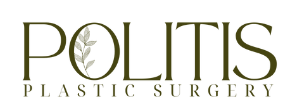Key Takeaways:
- Combining various procedures, such as blepharoplasty, lip fillers, Morpheus treatment, Accutite, and Botox, can provide comprehensive facial rejuvenation.
- Working with an experienced plastic surgeon like Dr. Effie Politis can help you develop a personalized treatment plan to achieve your desired results.
- Each procedure targets a specific aspect of facial aging, leading to a refreshed and youthful appearance when combined.
As you age, you may notice changes in your facial features that leave you longing for a more youthful appearance. Fortunately, with the expertise of a skilled plastic surgeon in Tampa, FL like Dr. Effie Politis, you can achieve a refreshed and revitalized look. Combining various procedures, as showcased in this before-and-after post, can make a significant difference.
The patient, a 58-year-old woman, underwent multiple treatments to achieve a refreshed facial appearance. These procedures included blepharoplasty (eyelid surgery), the use of 2 cc of Versa lip filler, Morpheus treatment, Accutite lower lid treatment, and Botox. The results are visible in the second photo, where the patient appears more youthful and vibrant.
Blepharoplasty, or eyelid surgery, is a popular procedure that can help restore a more youthful appearance by removing excess skin and fat from the upper and lower eyelids. This helps eliminate puffiness, sagging, and wrinkles, giving the eyes a brighter, more alert look. The Versa lip filler adds volume and shape to the lips, creating a fuller, more balanced appearance.
Morpheus is a cutting-edge treatment that combines microneedling with radiofrequency energy to stimulate collagen production and tighten the skin. Accutite is a minimally invasive procedure that targets the lower eyelids, helping to smooth wrinkles and tighten the skin in this delicate area. Finally, Botox injections help to reduce the appearance of fine lines and wrinkles.
By working with an experienced plastic surgeon in Tampa, FL like Dr. Effie Politis, you can develop a personalized treatment plan that addresses your unique concerns and aesthetic goals. Combining multiple procedures can provide comprehensive rejuvenation, leaving you looking and feeling your best.




 As you peer into the mirror, searching for the face of your youth, the idea of a facelift might flutter into your thoughts. A
As you peer into the mirror, searching for the face of your youth, the idea of a facelift might flutter into your thoughts. A 



 As you gaze at your reflection in the mirror and wonder about the right enhancements to create the perfect pout that would make even the most stoic Greek gods blush, lip fillers may be your ideal solution. This trendy procedure has become a popular choice among beauty-seekers who wish to attain fuller, plumper lips that look naturally stunning. So, allow me to guide you through what to expect during a lip filler procedure, as well as introduce you to a renowned
As you gaze at your reflection in the mirror and wonder about the right enhancements to create the perfect pout that would make even the most stoic Greek gods blush, lip fillers may be your ideal solution. This trendy procedure has become a popular choice among beauty-seekers who wish to attain fuller, plumper lips that look naturally stunning. So, allow me to guide you through what to expect during a lip filler procedure, as well as introduce you to a renowned 


